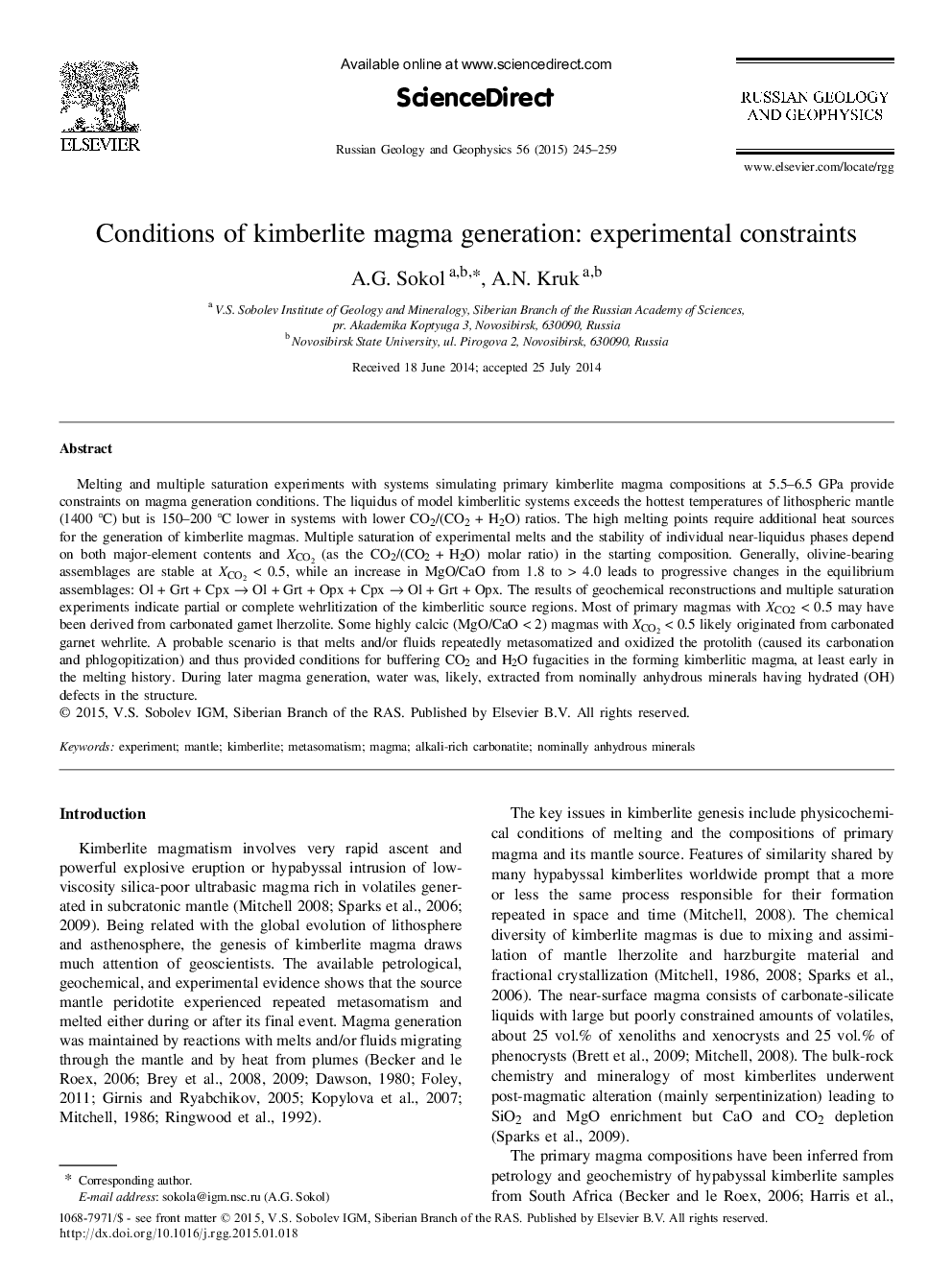| Article ID | Journal | Published Year | Pages | File Type |
|---|---|---|---|---|
| 4738455 | Russian Geology and Geophysics | 2015 | 15 Pages |
Melting and multiple saturation experiments with systems simulating primary kimberlite magma compositions at 5.5-6.5 GPa provide constraints on magma generation conditions. The liquidus of model kimberlitic systems exceeds the hottest temperatures of lithospheric mantle (1400 °C) but is 150-200 °C lower in systems with lower CO2/(CO2 + H2O) ratios. The high melting points require additional heat sources for the generation of kimberlite magmas. Multiple saturation of experimental melts and the stability of individual near-liquidus phases depend on both major-element contents and XCO2 (as the CO2/(CO2 + H2O) molar ratio) in the starting composition. Generally, olivine-bearing assemblages are stable at XCO2 < 0.5, while an increase in MgO/CaO from 1.8 to > 4.0 leads to progressive changes in the equilibrium assemblages: Ol + Grt + Cpx ^ Ol + Grt + Opx + Cpx ^ Ol + Grt + Opx. The results of geochemical reconstructions and multiple saturation experiments indicate partial or complete wehrlitization of the kimberlitic source regions. Most of primary magmas with XCO2 < 0.5 may have been derived from carbonated garnet lherzolite. Some highly calcic (MgO/CaO < 2) magmas with Xco2 < 0.5 likely originated from carbonated garnet wehrlite. A probable scenario is that melts and/or fluids repeatedly metasomatized and oxidized the protolith (caused its carbonation and phlogopitization) and thus provided conditions for buffering CO2 and H2O fugacities in the forming kimberlitic magma, at least early in the melting history. During later magma generation, water was, likely, extracted from nominally anhydrous minerals having hydrated (OH) defects in the structure.
